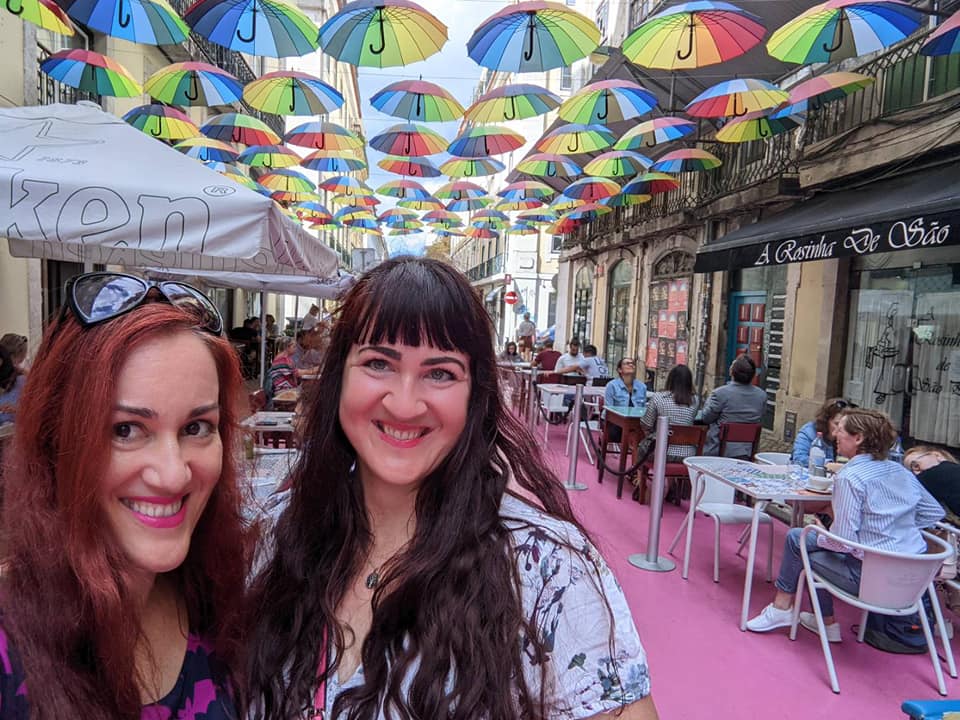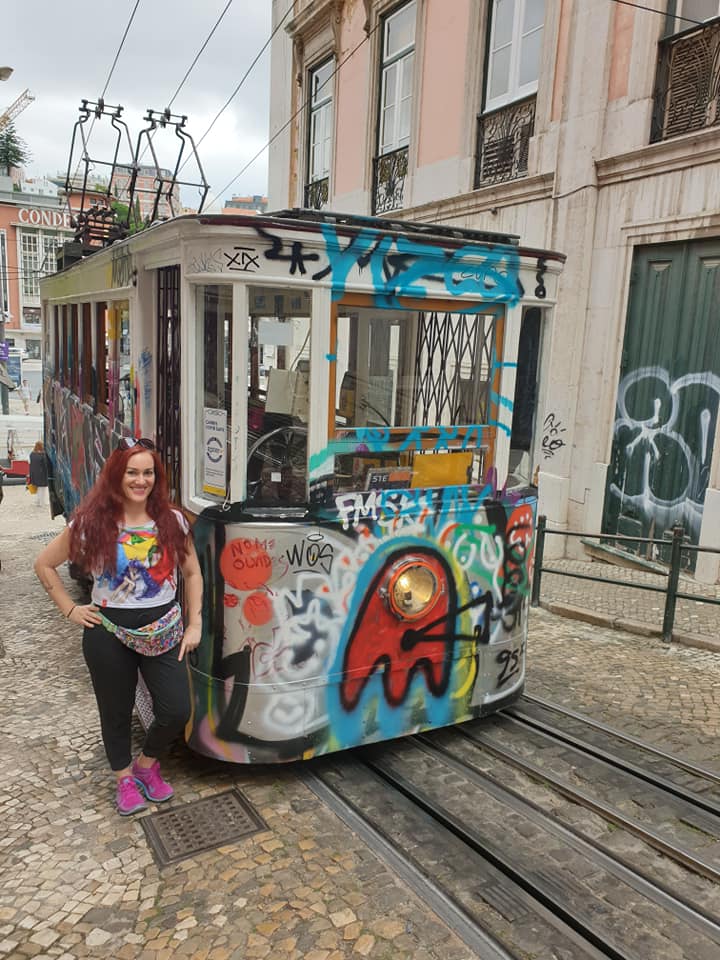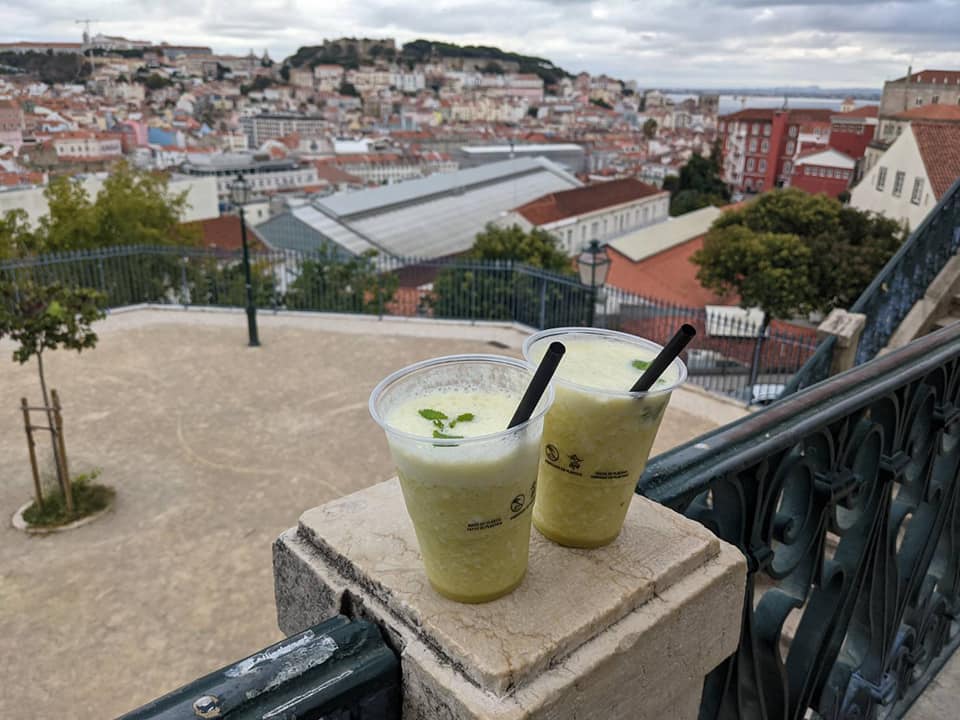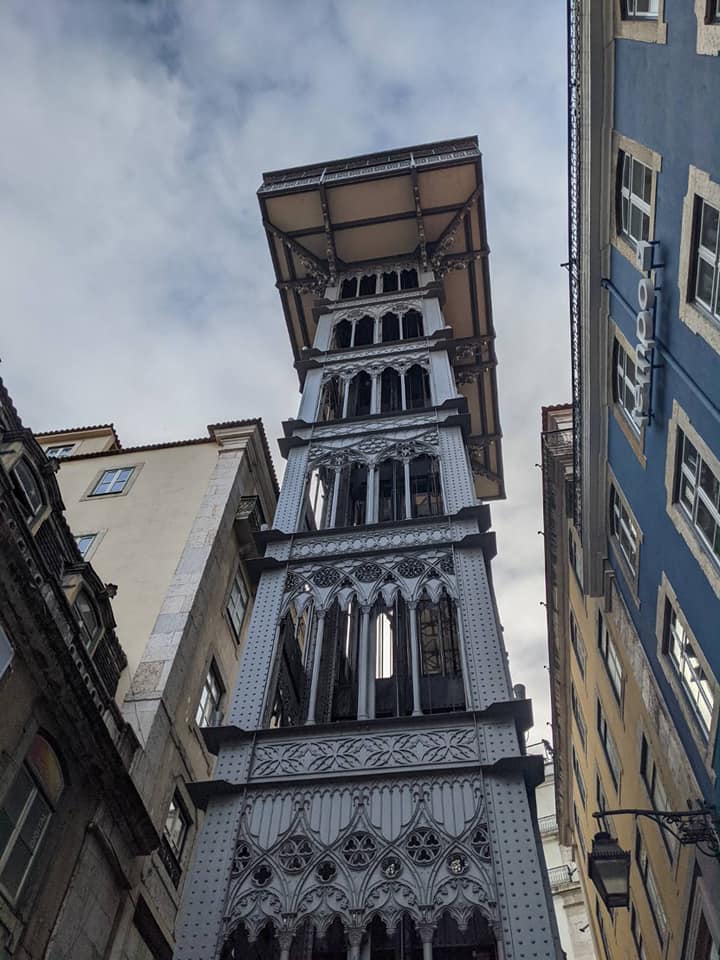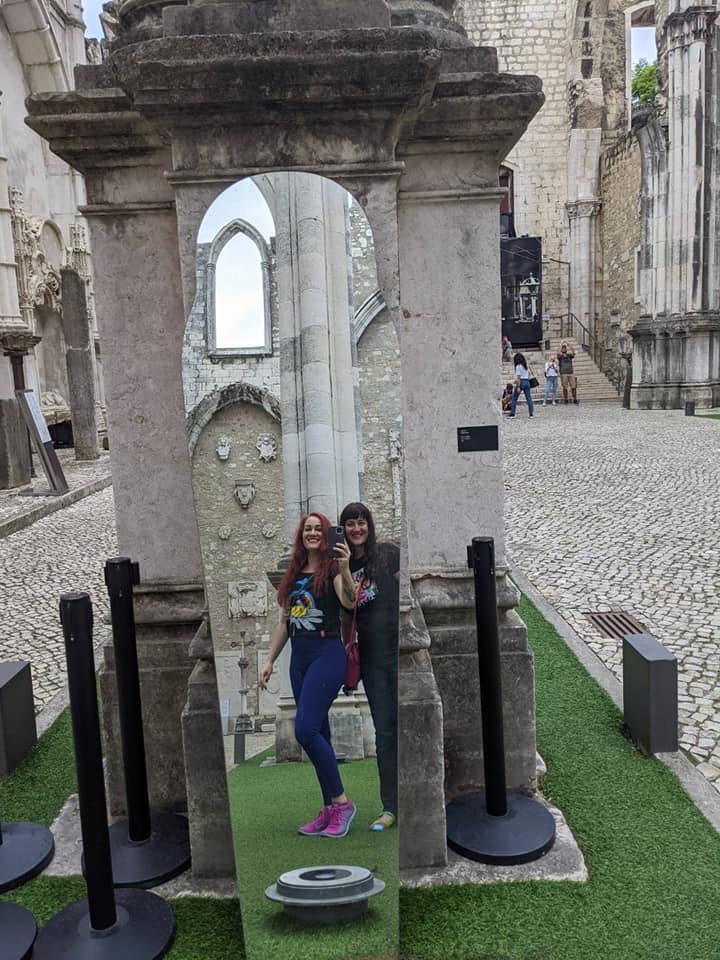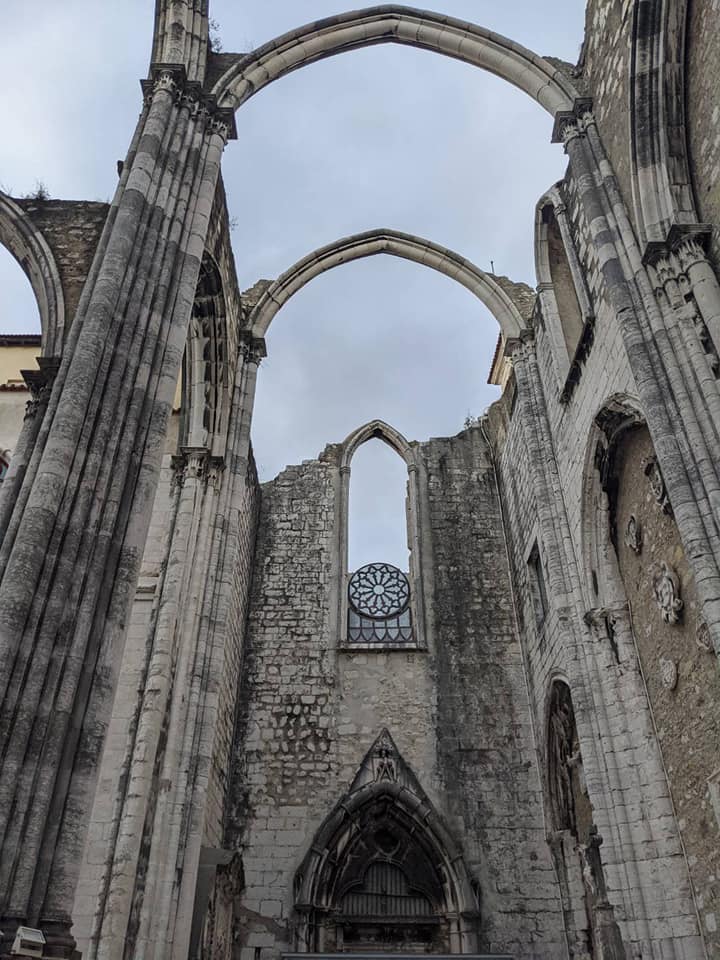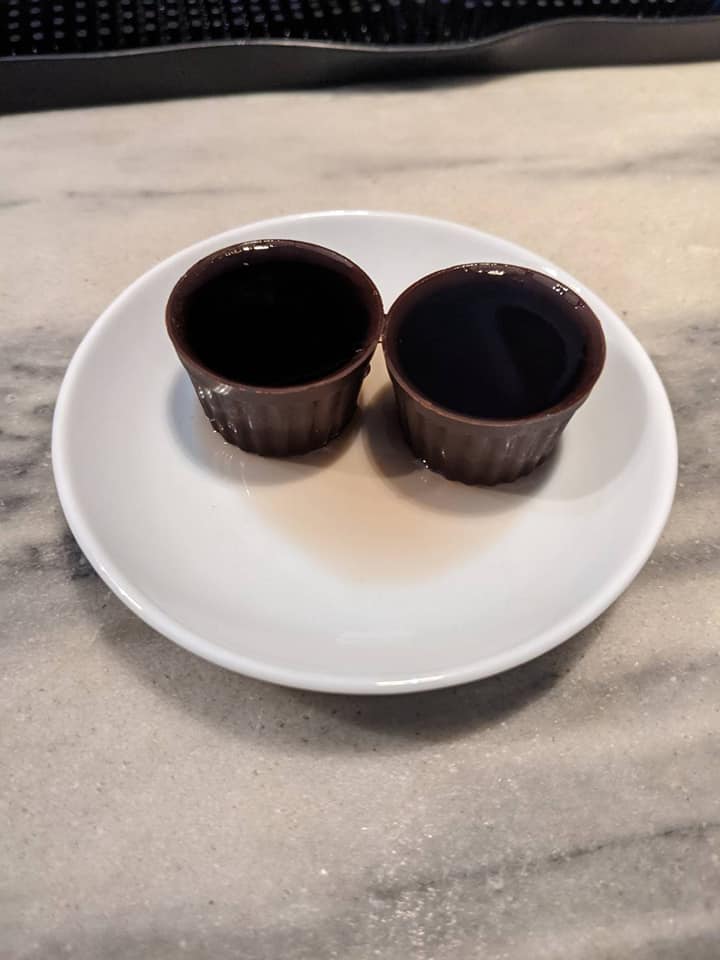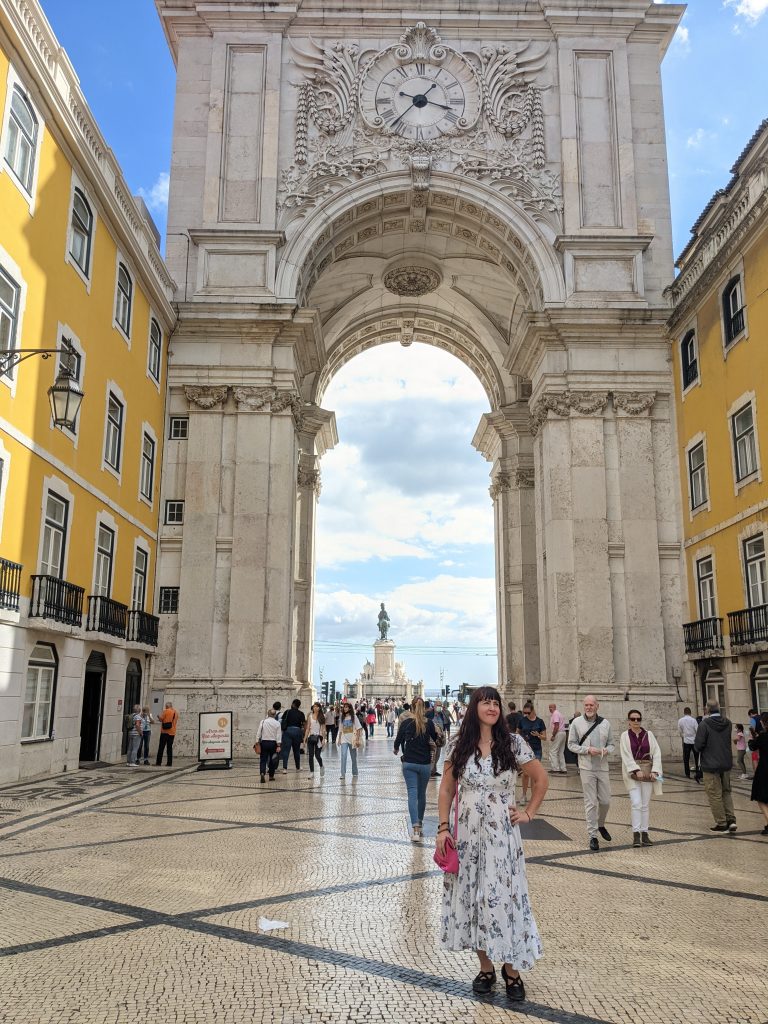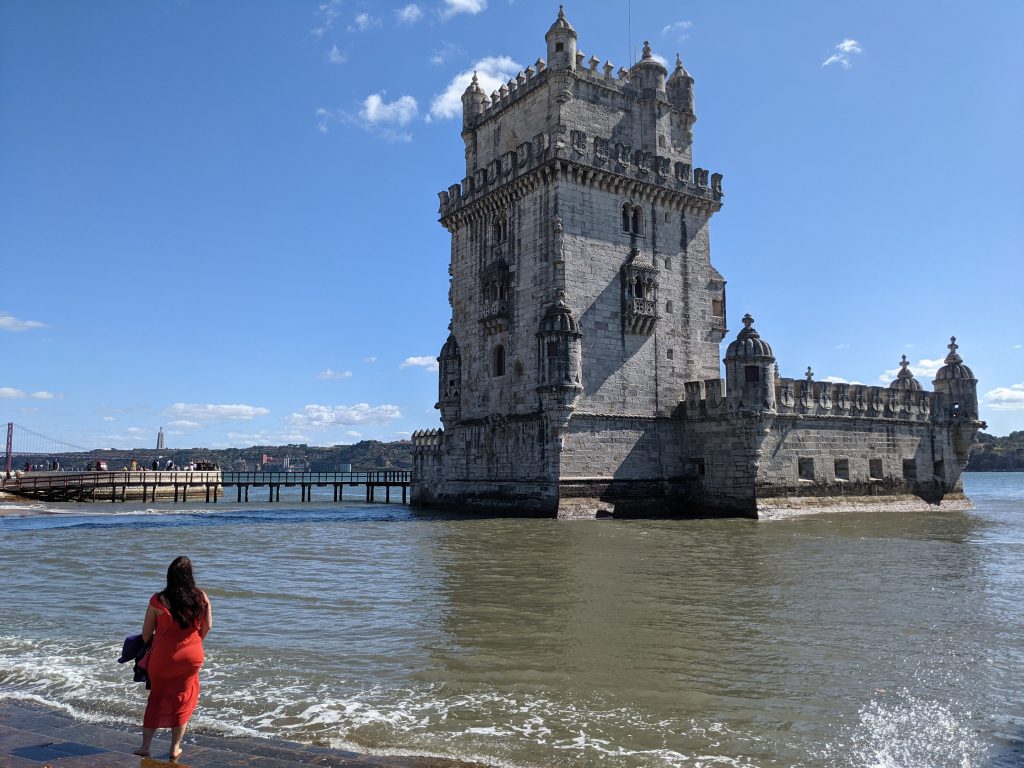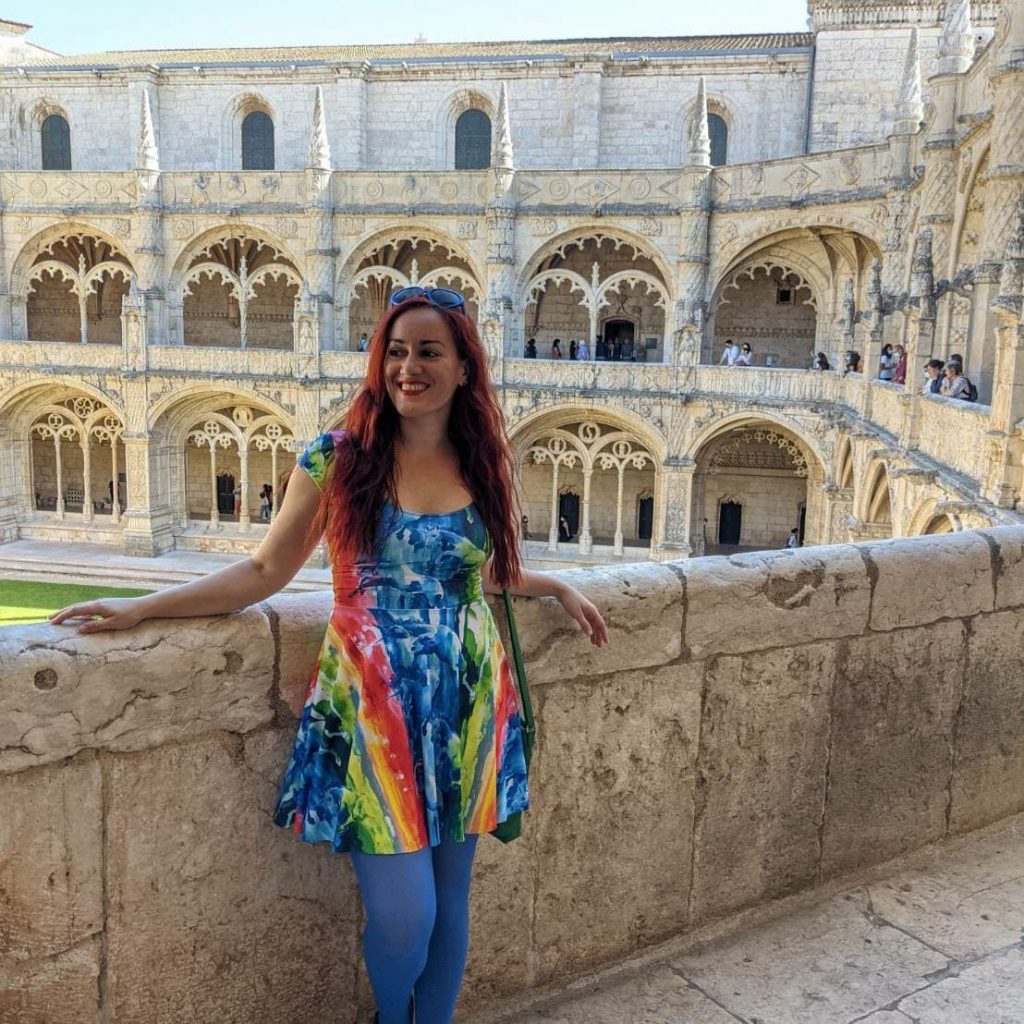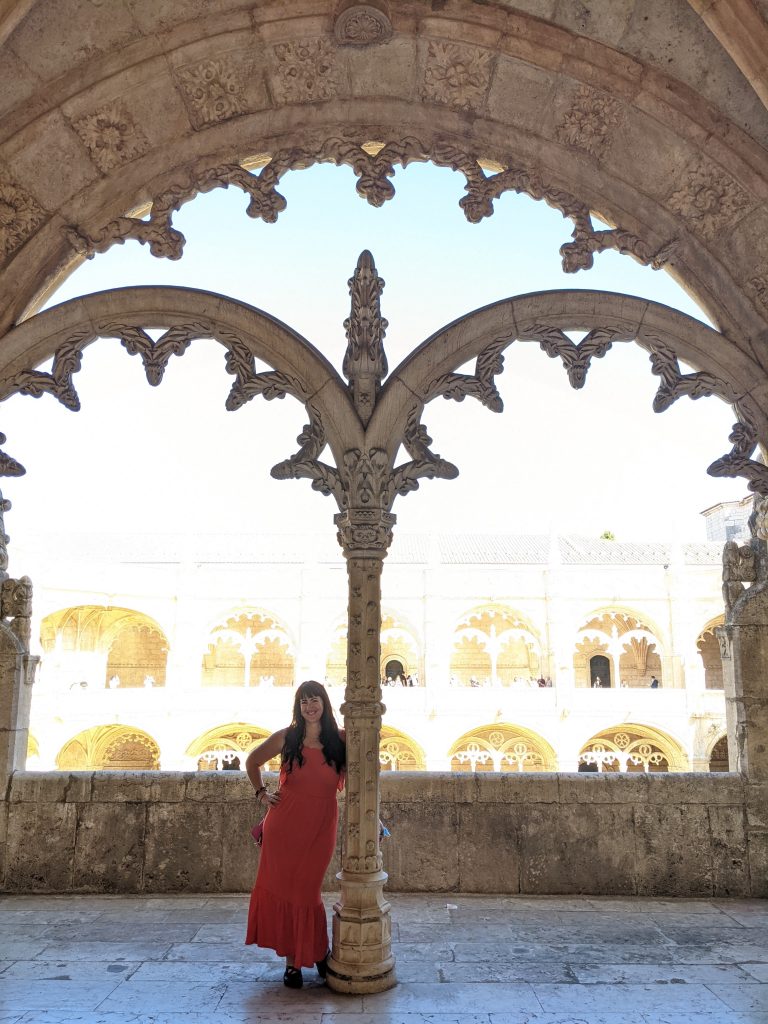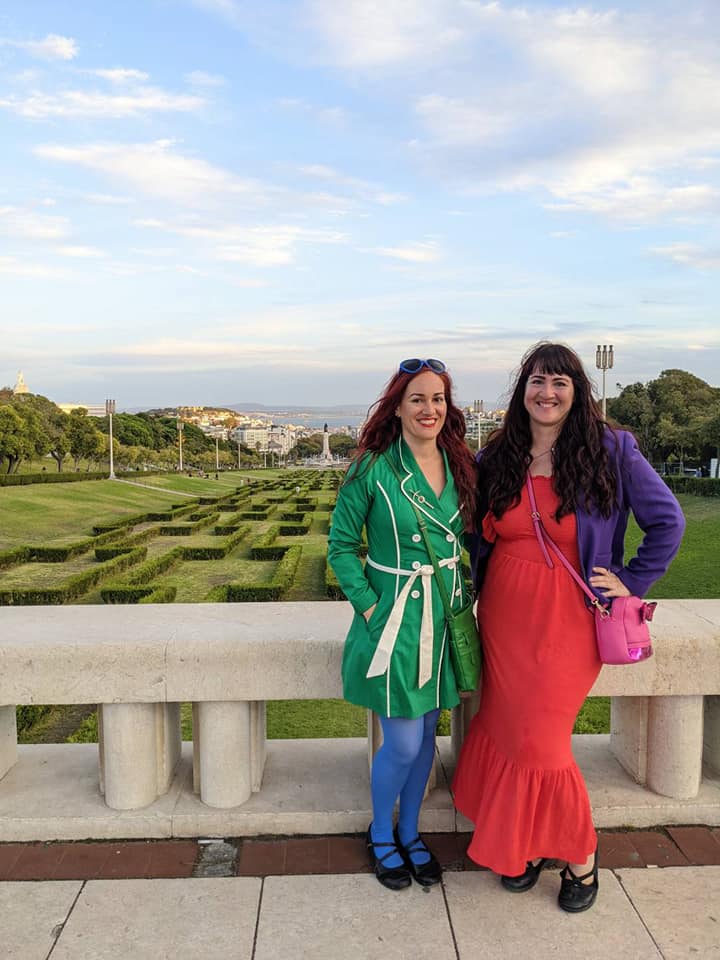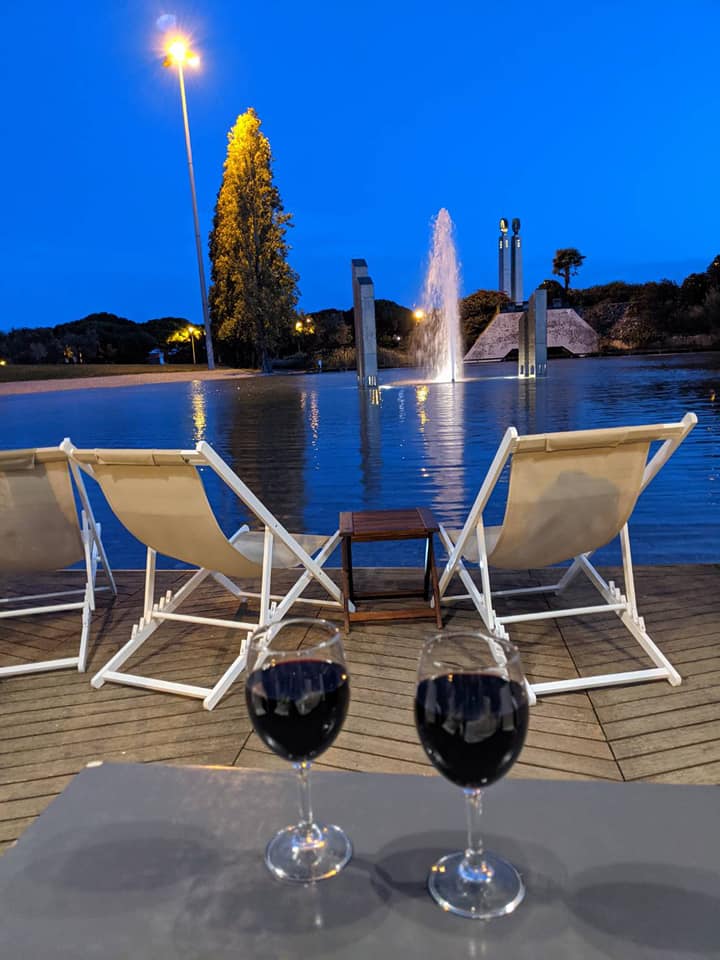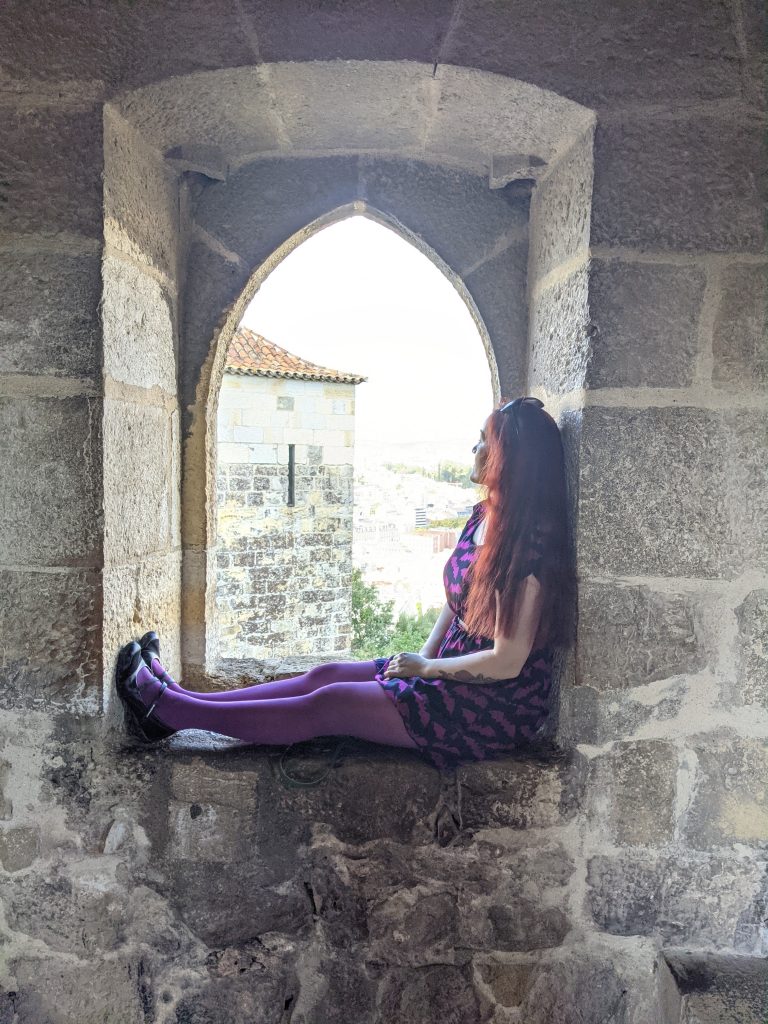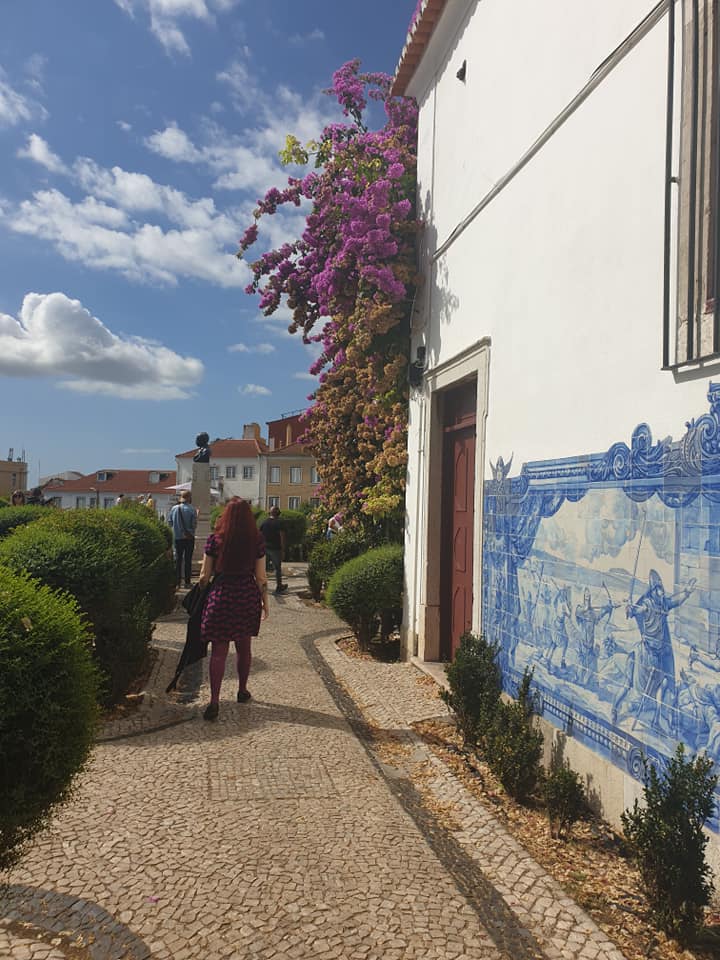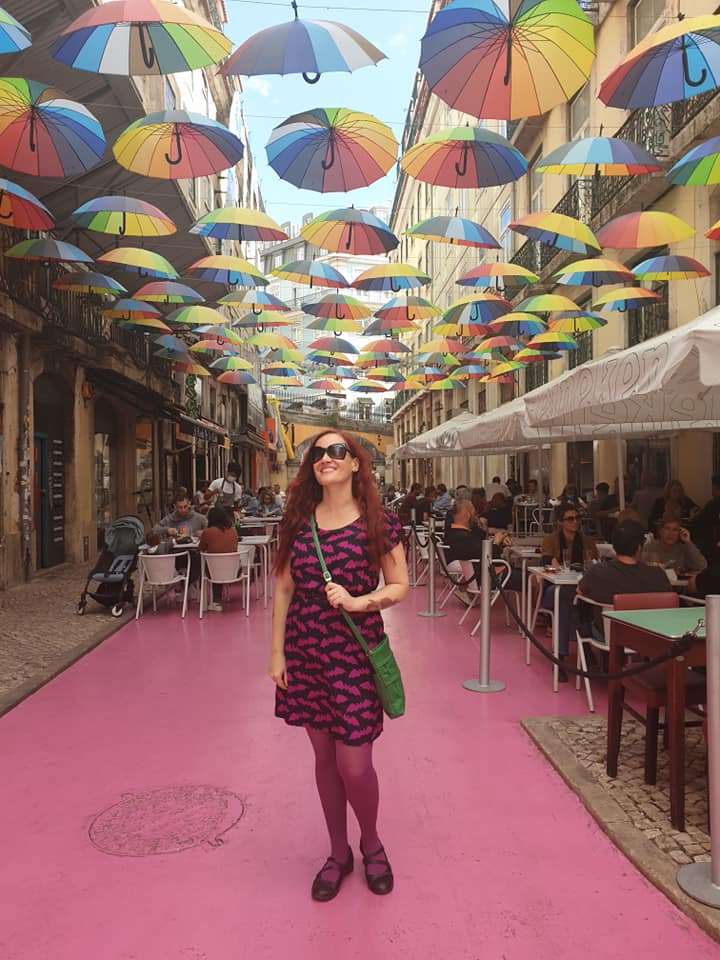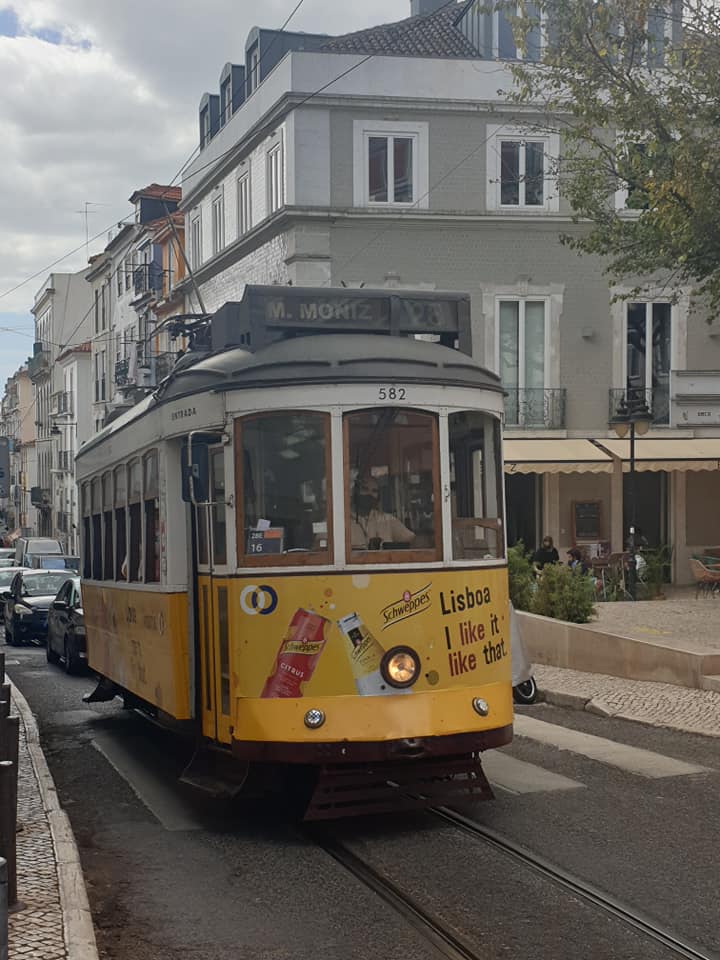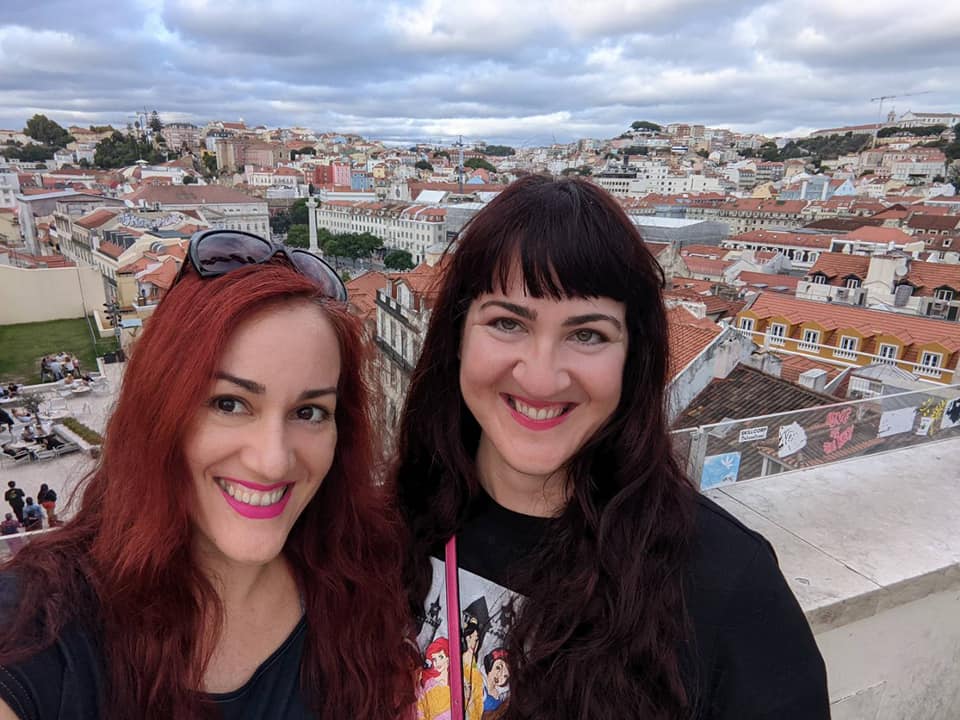I had planned to go to Portugal in 2020, but we all know how that went. The trip to Portugal was planned in a couple weeks due to my sister finding cheap airline tickets, and the country ending their COVID restrictions. Portugal required a negative test to get in, and we needed the same to return to the US. We were excited to be able to travel overseas again. We went in October, and the weather was perfect, in the 70s and 80s Fahrenheit. We still brought sweaters for chilly evenings. The Wayfaring Gals spent about ten days in this beautiful country, and still felt that we needed more time since there is so much to see there.
The flight there was awful since it was with United Airlines, so there were small overheard bins that people were fighting over. We were forced to check in our carry ons and charged ridiculously. When we landed in Lisbon we were tired, but due to the time difference we couldn’t go to sleep. Lisbon is the capital of Portugal and the largest city in the country (population of about 2.7 million). It is also a city of hills off the Tagus River. Lisbon is one of the safest capital cities in Europe, but be careful of pick pockets as in other major European cities.
My sister and I stayed at the Hotel Lisboa, which is right off Avenida da Liberdade near downtown Lisbon, so after checking in we started exploring. There are outdoor cafes off Liberdade avenue so we were able to have a nice lunch and espresso to get going. Lisbon has beautiful squares and we went right to Praca Dom Pedro IV, which has some beautiful fountains. It used to be the place for executions, bullfighting and demonstrations, but I guess you can still demonstrate there. We took the Gloria Funicular from Restauradores Square, which takes you up an alley filled with street art up to Bairro Alto. We saw our first overlook in Lisbon: Miradouro de Sao Pedro Alcantara. There was also a market with art, souvenirs and drinks. I needed some fresh fruit so I had a pineapple smoothie, which was delicious. I also bought some paintings with scenes from Lisbon from a local artist.
We walked back down the stairs to continue through Praca Dom Pedro IV, and found the Fantastic World of Portuguese Sardines store, which has a carnival theme going on. Who knew sardines were so big here and that you can get them in all kinds of different packaging. We even found zodiac sardines. We took the Santa Justa Lift, or the Elevator do Carmo, which is an elevator built in 1902 that takes you back up to Bairro Alto. It’s a short walk to the roofless Carmo Convent, or the Convent of Our Lady of Mount Carmel. The convent was built in 1389, but was destroyed in 1755 by the Lisbon earthquake. The main nave of the Carmo Church is beautiful, and you will enjoy looking at the different statues and artifacts from the church. The church is an archeological museum with pieces from Portuguese history. There are gothic tombs inside the museum as well. There is a beautiful Miradouro near the convent that you can enjoy more views of Lisbon. Carmo Convent was particularly beautiful near sunset.
We found a restaurant to have fish (seafood is a specialty in Portugal), and paired it with local beer, which was a delicious dinner. The food tasted fresh and the portions were perfect. For dessert we tried the chocolate cups filled with Ginjinha, a Portuguese liqueur made by infusing sour cherries in Aguardente (Portuguese Brandy). The place we found gave you a refill, and then you’re able to eat the cup. The chocolate goes really well with the sour cherry liqueur; it was delish. Since it was the longest day for us, as well as having jet lag, we called it a day and went back to our hotel to get some rest.
The next day we walked through Rua Augusta Arch onto Praca de Comercio which is a large square that is harbor facing. There is a statue of King Jose I, and you can see the Lisbon Arch of Triumph. It’s a spectacular squares. We saw many Tuk Tuks waiting there, but they are much more expensive compared to Southeast Asia, and sell tours, but we didn’t go with them. Instead, we made the mistake of purchasing hop on, hop off bus tickets, which I do not recommend. A lot of the audio outlets were broken and we had to move around to find two that worked so we could listen to the tour guide as we rode along the city. We also couldn’t find one on the way back.
We took the bus to Belem Tower (or officially the Tower of Saint Vincent), which was built in the 16th century, and was a fortification that served as a point of embarkation and disembarkation for Portuguese explorers. The tower was built on a small island on the Tagus River near the shore. It’s a UNESCO World Heritage Site, and one of the most visited sites in Lisbon. It’s a beautiful place and looks right out of fairytale. The tower can only be viewed from the outside.
Near the tower, is the Monument of Discoveries that you can go inside of as well, but we passed on that. The monument was built in 1960 and celebrates the Portuguese Age of Exploration. What’s nice is that both of these sites are close together can be viewed from the outside so you don’t need to spend much time at them since there is another amazing place near by that requires more time.
Jeronimas Monastery is near Belem Tower, and is another must see site in Lisbon. I recommend seeing the both the church and monastery. The monastery is a great example of Portuguese Late Gothic style of architecture. It is a former monastery of the Order of St.Jerome and was completed in 1601. The Manueline ornamentation in the cloisters is just amazing. The style is richly ornate with sculptural themes that incorporated maritime elements. We visited the site on a Sunday so it was free to get in. The lines can be confusing. You have to go into the building to get a ticket first, and then you go to the line outside to get into the church. We spent some time Jeronimas Monastery looking around in awe. The place is peaceful and relaxing.
Near the monastery is Pasteis de Belem where you can try pastel de nata, a Portuguese egg custard tart pastry, which I greatly enjoyed during my stay in the country. They are really good. The line to get inside Pasteis de Belem is really long, but you can get the pastel de nada to go (that line moves quickly). We were able to enjoy the pastries in the park across the street.
On our bus ride on the way to Belem, we passed a beautiful park: Eduardo VII Park, so we wanted to go back before dark. The park was named after Edward VII of England who visited Portugal in 1903. We waited over an hour for the hop on bus, which never came so we decided to take an Uber there. We walked from the bottom of the park up to the top, enjoying the view as the sun set. We found a cafe, Linha d’Agua, at the top near a pond where we had a meal and enjoyed some wine. The cafe’s prices were reasonable. This was a great way to end a fun day of seeing the sites of Portugal!
The next day we decided to take an Uber up to the Castle of St. George, or Castelo de Sao Jorge. The castle sits on the tallest hill in Lisbon so the castle can be seen from almost everywhere, which is what made us want to visit. The site has important historical significance since settlement goes back to the eighth century BC as a Roman municipality. The fortifications were built by the Moors in the tenth century. The city was freed from Moorish rule in 1147 by Alfonso Henriques. Lisbon became the capital of the Kingdom of Portugal in 1255, and the site became the residence of Alfonso III. The castle was badly damaged during the earthquake of 1755 and fell into disrepair. The castle has great views of the city and I recommend going for that alone. We took a tour, which wasn’t too interesting so I suggest you skip the tour, and just enjoy looking around the medieval castle. You can also have a nice cup of coffee there while enjoying the amazing views from the tallest hill.
We decided to walk downhill from the Castle of St. George into the Alfama neighborhood, and found Miradouro de Santa Luzia, which is a popular observation deck that has a beautiful terrace that overlooks the Tagus River. Adding to the ambiance, there was music playing and beautiful flowers, as well as tiled walls. As we kept walking downhill, we stopped at the Museu de Lisboa to check out the flower wall. We also stopped for some gelato, which was amazing. While we were in the area we took the famous Tram 28, which is a historic tram that goes through the twisty and hilly streets of old Lisbon. This is an actual mode of public transit and not a tour. It’s great way to see the winding streets of the Alfama. We went on a couple times, but got off to continue walking to the city center.
Continuing downhill we stopped at the famous Pink Street for lunch and tea. The row of bars used to be a haunt for sailors. The street was painted in pink in 2013. This is also a good night spot. We went during the day so we were able to easily get a table at Sol e Pesca. When in Lisbon, definitely eat seafood. I had a delicious octopus salad and had some sardine dishes. It was nice to people watch and relax after so much walking. This is a popular picture spot so it’s better to go earlier. I’m sure it’s crazy in the evening. After a brief rest at the hotel, we met a friend of mine living in Lisbon for dinner in Bairro Alto. We enjoyed tapas and drinks as the sun set, and then walked around Lisbon enjoying the evening.
This was our last day in Lisbon until we returned at the end of our trip since had to fly out of there. You can purchase passes to take transit which is probably more economical; we took Uber in order to capitalize on our time. Remember to avoid the hop on hop off bus! We had an enjoyable few days in the capital city and were excited to go to Porto the next day since we heard so many good things!
If you like our Facebook page, there are videos from the trip posted that you can check out as well. I also update the Instagram WayfaringGal page (which has more photos from the trip) with new posts. Thank you for reading, and comments and feedback are always welcome since that is how we learn and grow.
